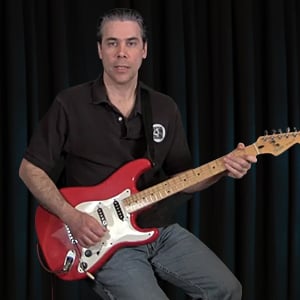Description
By the end of this tutorial you should understand and be able to play basic triad chord shapes and their inversions in multiple fretboard locations. You should understand how chords are built from scales and the concept of triadic harmony or tertiary harmony.
Lesson Info

Instructor
Christopher Schlegel
- Styles:
- Any Style
- Difficulty:
-
- Files
- Videos / Score
- Published
Contents
- Intro to Triads & Inversions: Lesson 1
- Intro to Triads & Inversions: Lesson 2
- Intro to Triads & Inversions: Lesson 3
- Intro to Triads & Inversions: Lesson 4
- Intro to Triads & Inversions: Lesson 5
- Intro to Triads & Inversions: Lesson 6
- Intro to Triads & Inversions: Lesson 7
- Intro to Triads & Inversions: Lesson 8
- Intro to Triads & Inversions: Lesson 9
- Intro to Triads & Inversions: Lesson 10
- Intro to Triads & Inversions: Lesson 11